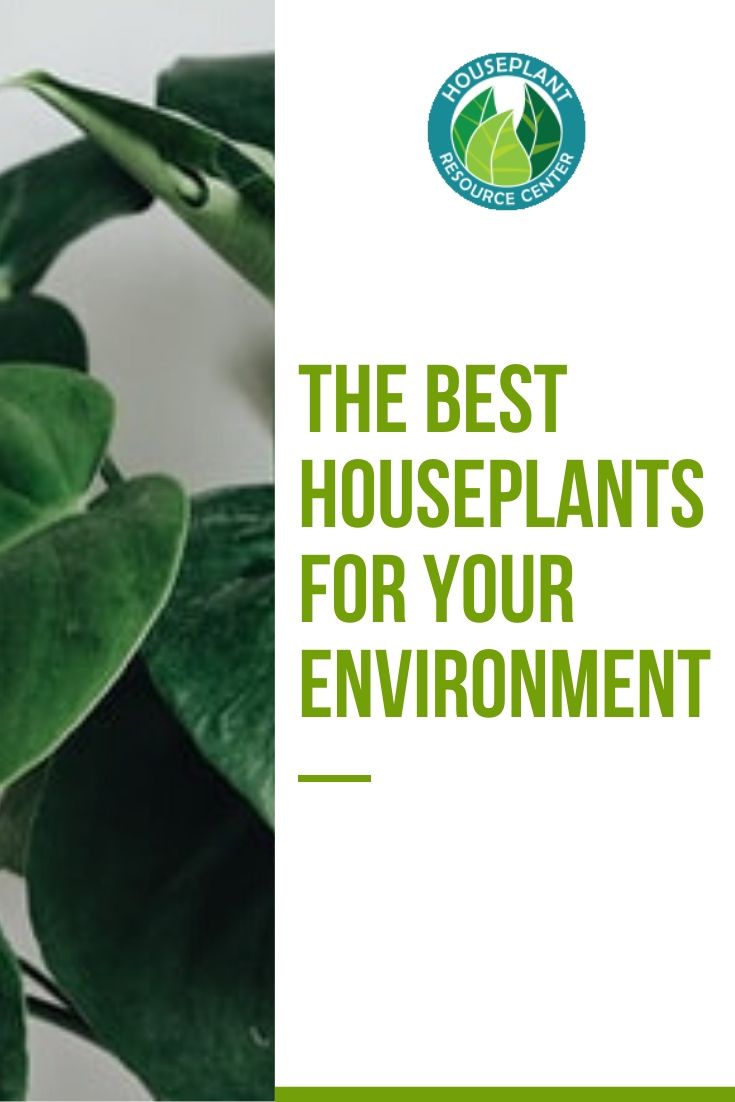To determine the best houseplants for your environment, remember that indoor plants need a few things to survive: light, water, fertilizer, soil, and the right amounts and types of each. Different plants prefer completely different light conditions, temperatures, and humidity levels as well. So what’s the perfect houseplant for your environment?
How do you pick the right plants for your home or office?
There are tons of houseplants to choose from, so you just need to find the plant that likes the light, temperature, and humidity conditions of your space.
The first step is to evaluate your space so you can figure out which plants will thrive there!
First, check your light.
What kind of light does your space have? Take note of how many windows you have, how large they are, and which direction they face. Also, notice whether you can easily read a book or newspaper in your space or if you need to turn on the light to do so.
If you have lots of windows and can read with no trouble, you probably have bright light. If you have fewer windows and tend to switch on a lamp when you want to read, you probably have low light.
Read our guide on evaluating your light conditions here.
Next, check temperature and humidity.
It’s best to think of these things together because they can work together. Humidity can make cold more extreme, and dryness can make heat feel extreme (for your plants, anyway).
You probably know the general temperature of your home because you most likely have a thermostat. You may also notice that some rooms (like upstairs rooms with lots of windows) tend to be warmer than others (like downstairs rooms with fewer windows).
Determining humidity is a little trickier. You can use a humidity meter like this one to tell for sure, or you can think about your general climate and how much heat and air conditioning you use in your space.
If you live in a warmer, more humid area, it’s safe to say that your home is a bit more on the humid side. If you can’t leave bread on the counter for a day or two without it molding, your home is fairly humid.
But if you live in the desert and run air conditioning all day, your home is probably on the dry side. If you can leave a loaf of bread on the counter for days without a problem, you have low humidity.
Note: Humidity can vary from room to room. For example, bathrooms tend to be the most humid areas of the house.
By now, you should have an idea of whether you have bright or low light and whether your house is warm or cool, humid, or dry.
So which plants would work best for those conditions?
Don’t worry, we’ve got you! Here’s a quick and easy guide to which plants would thrive best in different areas of your home or office. (And chances are, we have a guide to caring for them!)
Table of Contents
The Best Houseplants for Your Environment
Plants that thrive in low light
- Snake plant
- Pothos
- Dracaena
- ZZ plant
- Peace lily
- Cast iron plant
- Philodendron
- Parlor palm
Top 5 Low-Light Plants for Beginners
Plants that thrive in bright light
- Succulents (like aloe vera)
- Fiddle leaf fig
- African violet
- Peperomia
- English Ivy
- Monstera
- Rubber tree
- Money tree
- Bromeliads
- Prayer plant
- Ponytail palm
Plants that thrive in dry conditions
- Succulents (like aloe vera)
- Snake plant
- Dracaena
- Philodendron
- Peperomia
- Ponytail palm
- Bromeliads
- Parlor palm
- Spider plant
Plants that thrive in cold temperatures
- Succulents (like aloe vera)
- Snake plant
- Peace lily
- Bromeliads
- Christmas cactus
- Chinese evergreen
Plants that thrive in humid conditions
- Fiddle leaf fig
- Monstera
- Money tree
- Boston fern
- Air plants
- Pothos
- Orchids
A Plant for Every Room
Your Office
Offices are typically dry with lower light conditions, thanks to indoor climate control and large spaces with limited windows.
The best plants for your desk:
If you’re nowhere near a window:
- Snake plant
- Cast iron plant
- Peace lily
If you have some light:
- Philodendron
- Snake plant
- Cast iron plant
- Peperomia
On the floor:
Bedroom
Try these plants to purify air in your room! These plants thrive in drier conditions and have flexible light needs.
By the window:
- Succulents (like aloe vera)
- Fiddle leaf fig
Away from the window:
- Spider plant
- Prayer plant (You can watch it fold up at night!)
- Snake plant (Let’s face it, you can pretty much put these anywhere!)
Bathroom
These plants like humid conditions, though their light needs may vary.
- Air plants
- Pothos
- Orchids
- Peace lily
- Lucky bamboo
No matter what kind of home you live in or office you work in, there’s a plant out there for you! All you have to do is find the right plant for the right space.




